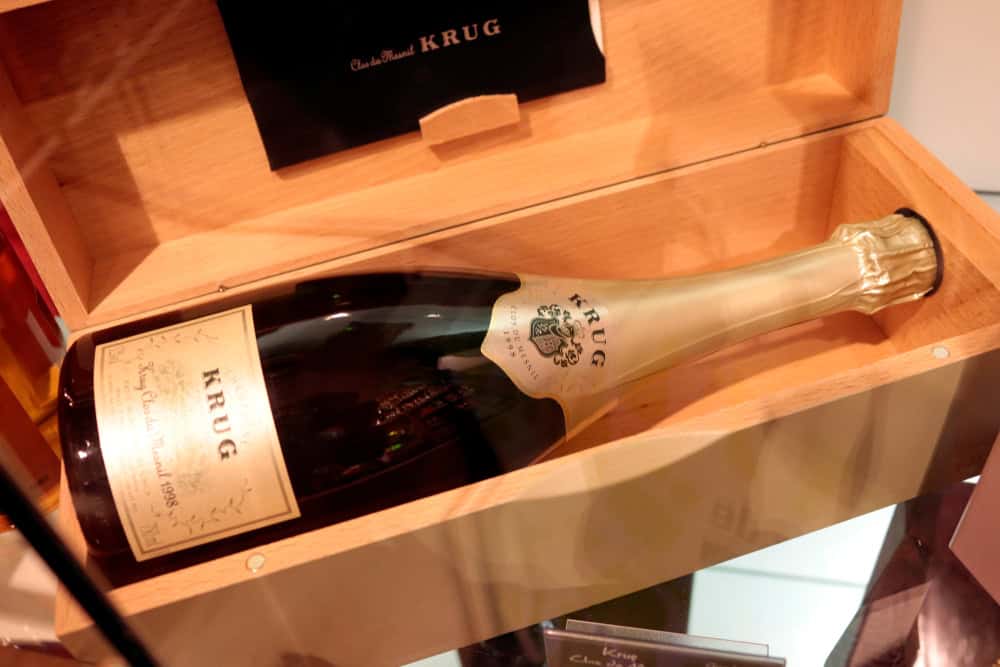The natural world is full of wonders, and among its most captivating are the rare plants that thrive in some of the most unique and often harsh environments on Earth. These botanical marvels, found in various corners of the globe, possess extraordinary characteristics that set them apart from more common flora. From enormous blooms that emit peculiar odors to delicate flowers with mysterious histories, these rare plants not only intrigue botanists and nature enthusiasts but also underscore the importance of biodiversity and conservation. Here are 14 of the rarest plants found in the wild, each with a fascinating story to tell.
Middlemist’s Red (Middlemist camellia)
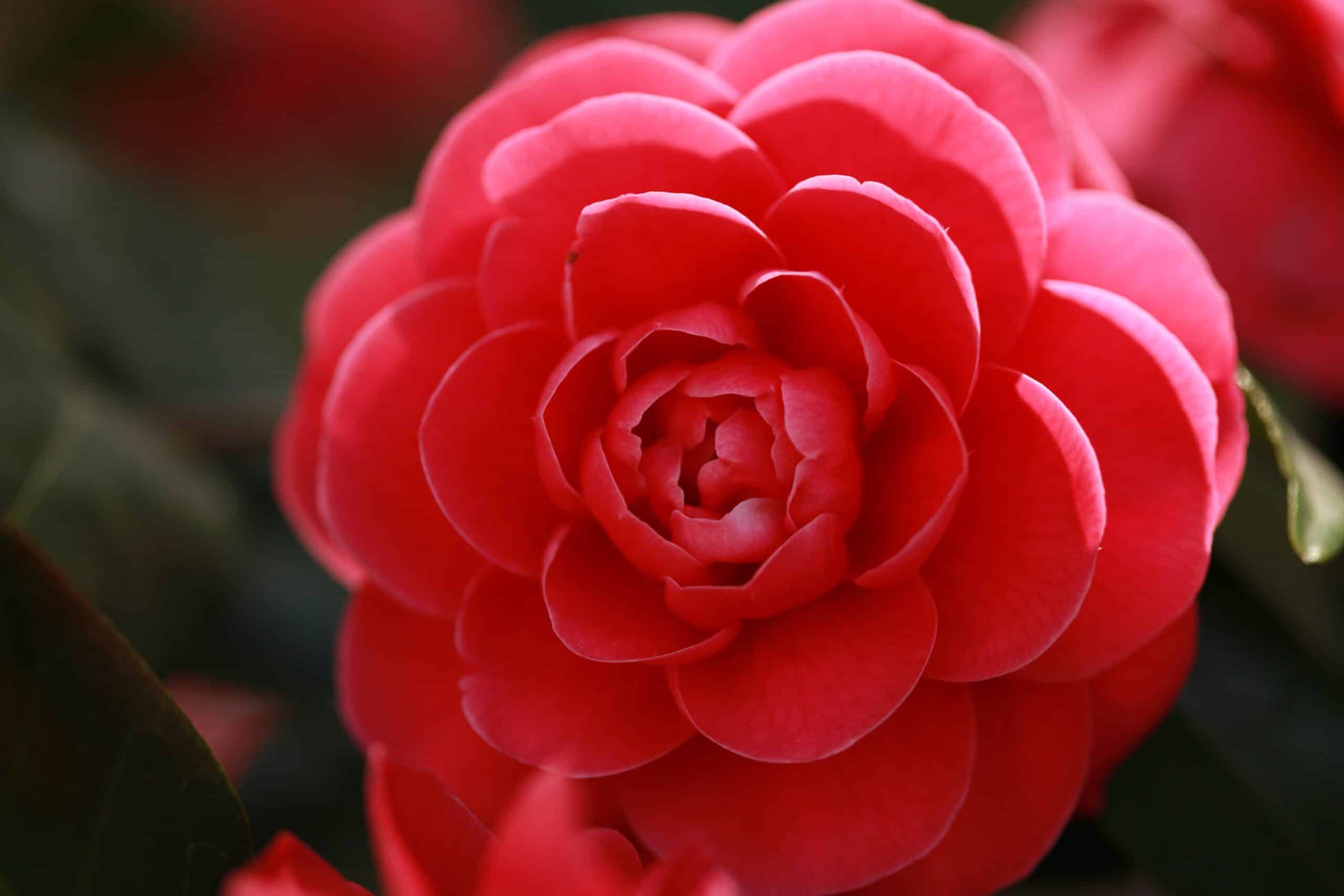
Middlemist’s Red, also known as Middlemist camellia, is an exceptionally rare flower with only two known specimens in existence: one in a greenhouse in the UK and another in New Zealand. This stunning plant features vibrant, rose-like blossoms that can captivate any onlooker. John Middlemist, a botanist, brought this plant from China to Britain in 1804. The plant’s survival and beauty depend heavily on meticulous care and specific growing conditions, making it a symbol of horticultural dedication and a living link to botanical history.
Corpse Flower (Amorphophallus titanum)
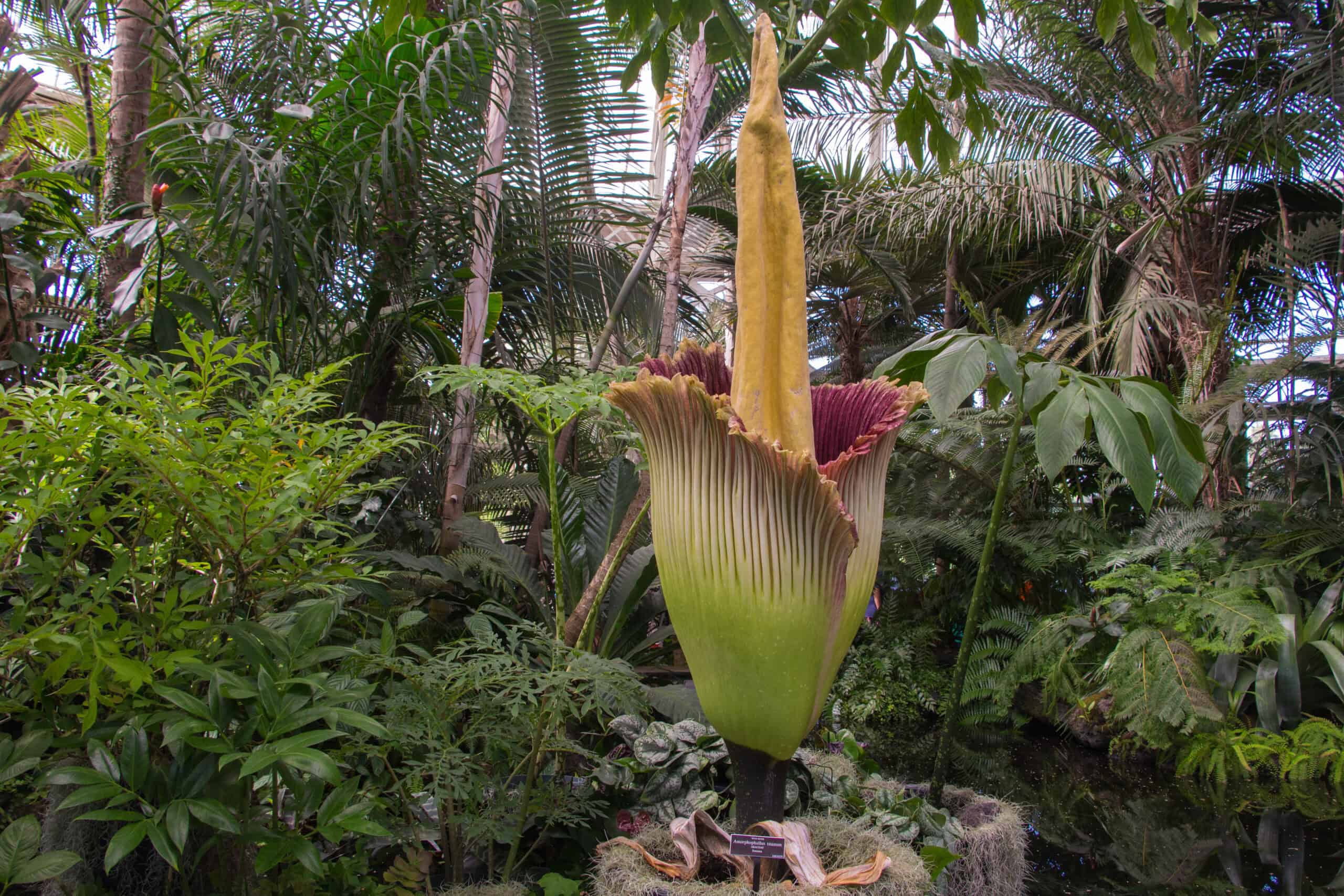
Known for its colossal size and foul odor, the Corpse Flower, or Amorphophallus titanum, is a marvel of the plant world. This gigantic flower can reach up to 10 feet in height and emits a stench reminiscent of rotting flesh, attracting carrion-eating beetles and flesh flies for pollination. Native to the rainforests of Sumatra, Indonesia, it blooms infrequently and unpredictably, sometimes taking several years between flowerings. Its rarity and unique characteristics draw significant attention whenever a specimen blooms in botanical gardens worldwide.
Rafflesia arnoldii
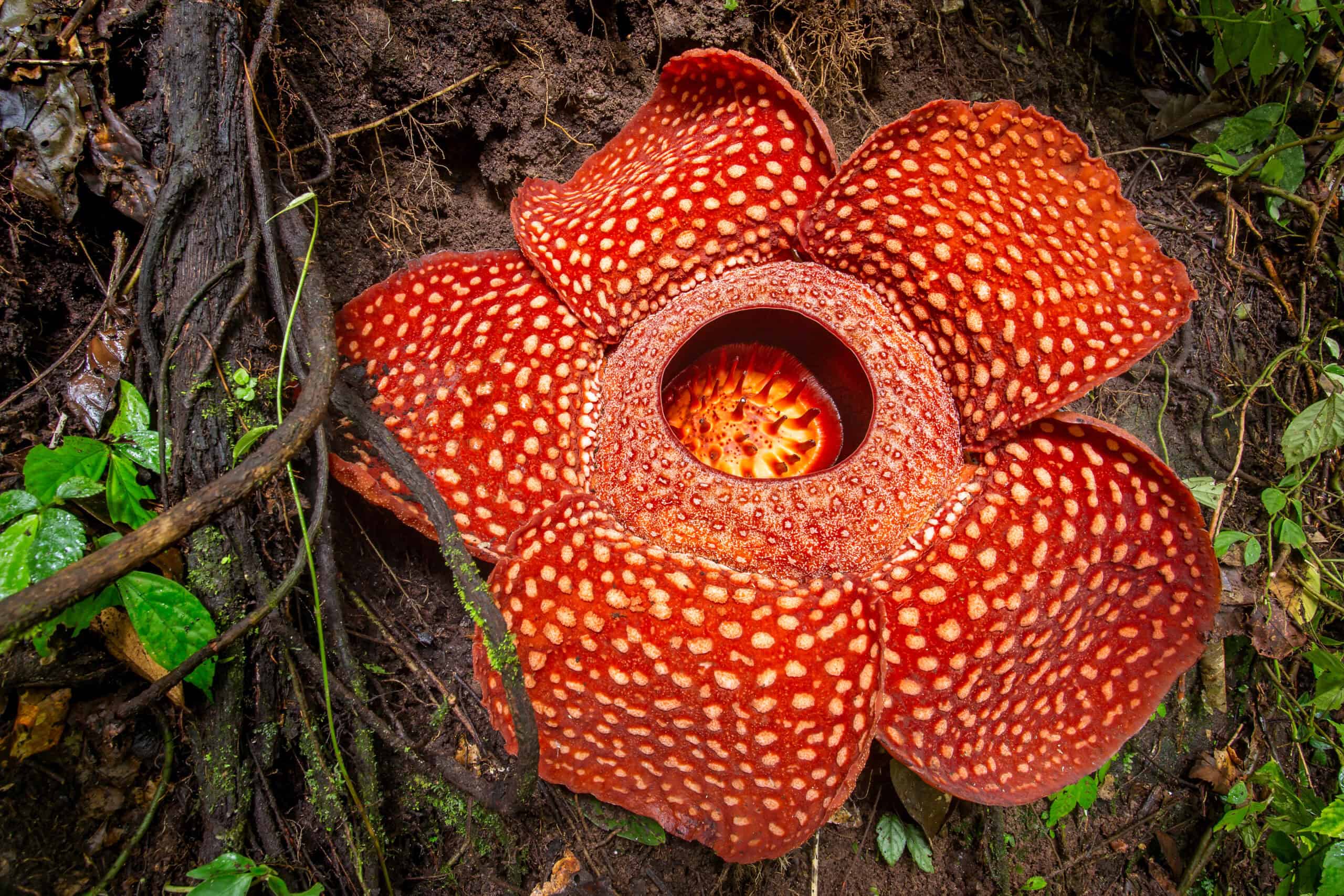
Rafflesia arnoldii boasts the title of the world’s largest individual flower, with blooms that can measure up to three feet in diameter. Found in the rainforests of Indonesia and Malaysia, this parasitic plant lacks leaves, stems, or roots, relying entirely on a host vine for nutrients. Its flesh-colored petals and overpowering odor of decaying flesh attract pollinators such as flies. Despite its prominence in the plant kingdom, deforestation and habitat loss have made sightings increasingly rare, adding to its allure and ecological significance.
Ghost Orchid (Dendrophylax lindenii)
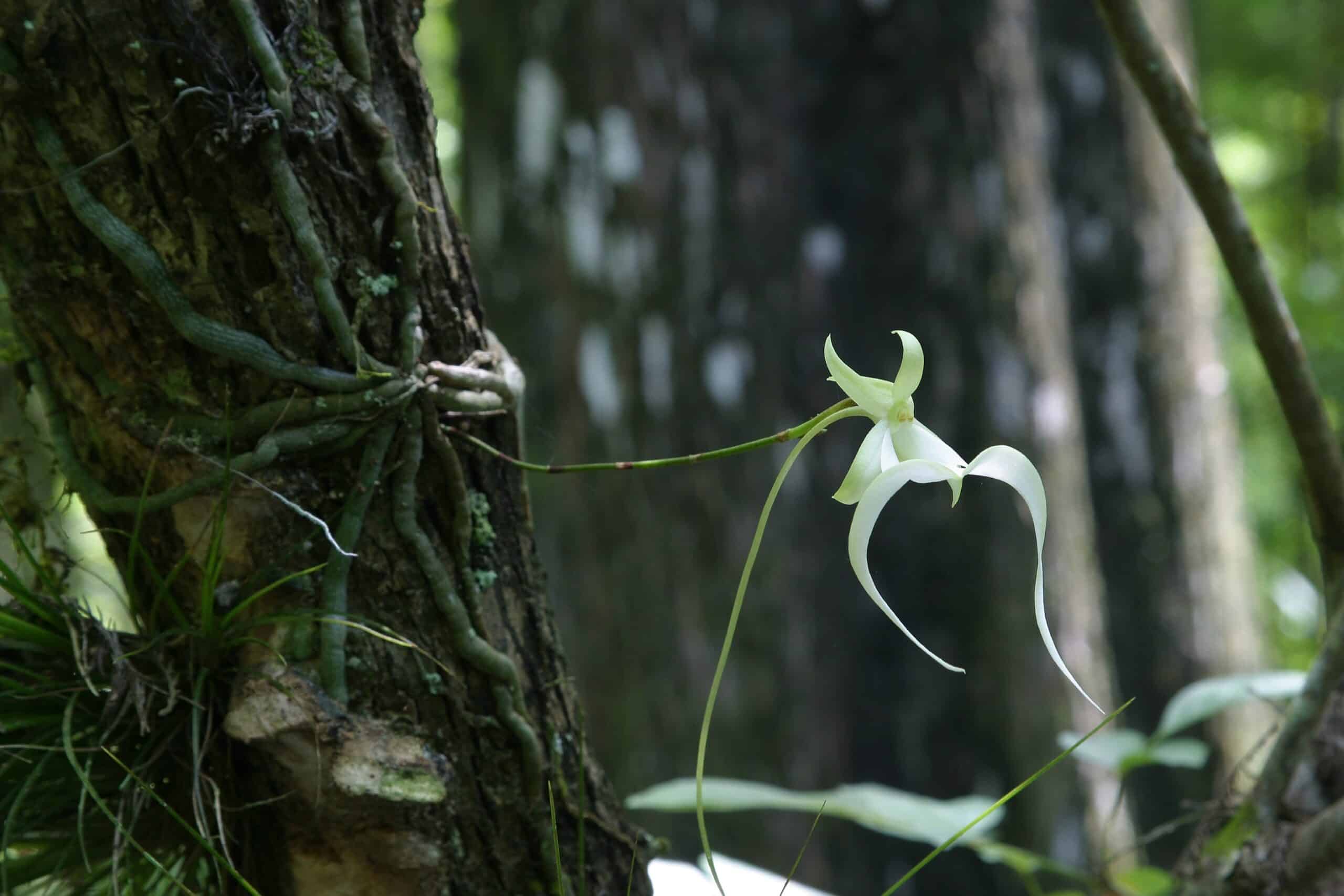
The Ghost Orchid, native to Florida, Cuba, and the Bahamas, is one of the most elusive and enchanting orchids. This epiphytic orchid has no leaves and appears as if it’s floating in mid-air when in bloom, hence its ghostly name. It thrives in swampy, humid environments, often high up in trees, making it difficult to locate. Its complex pollination process, relying on the giant sphinx moth, adds another layer of rarity to this ethereal flower, which has captured the imagination of botanists and orchid enthusiasts alike.
Juliet Rose (Rosa ‘Juliet’)
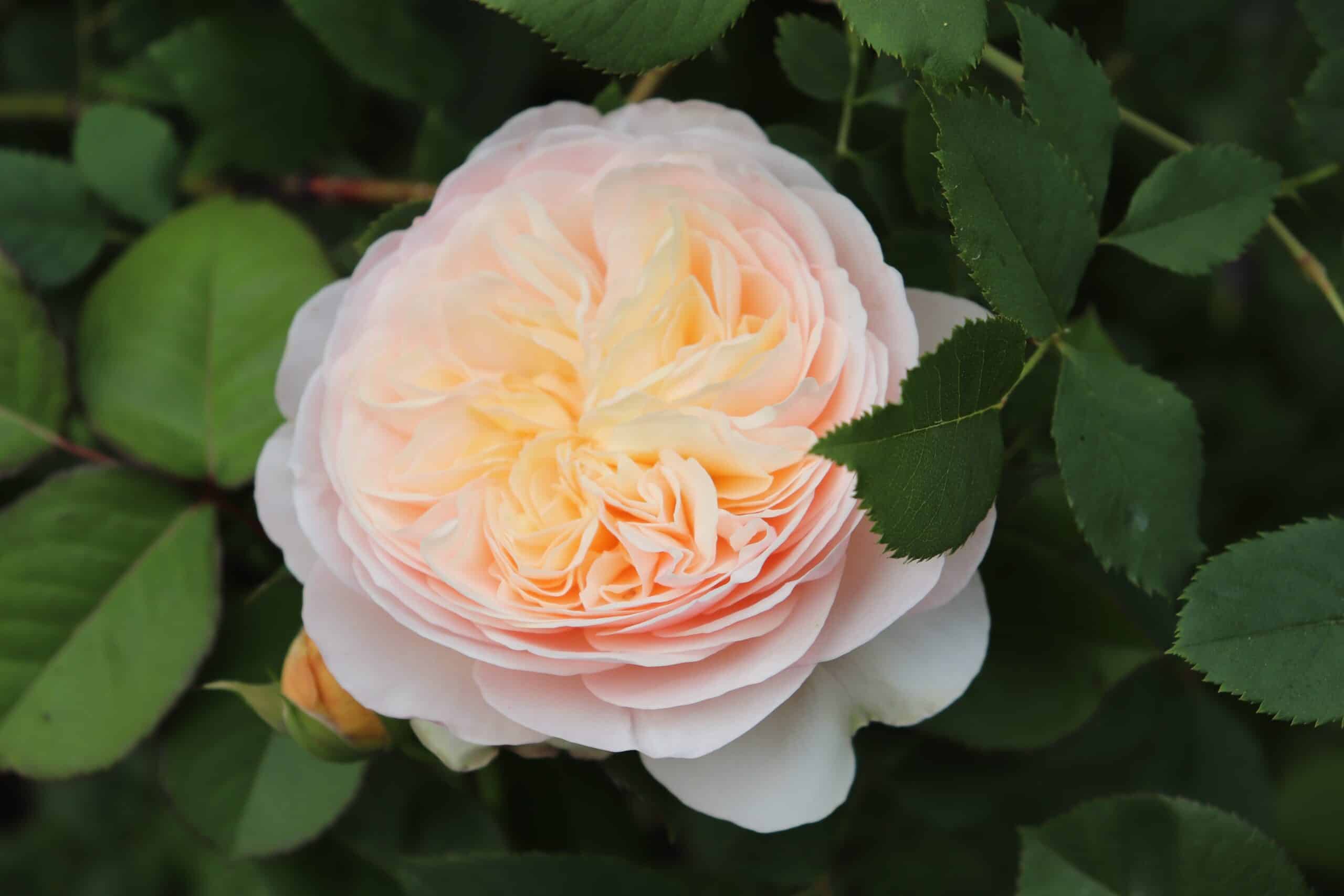
While cultivated rather than wild, the Juliet Rose deserves mention due to its rarity and the sheer cost of its creation. Developed by David Austin, this rose took 15 years and $5 million to breed. It features large, peach-colored blooms with a light tea fragrance. The rarity and high value of the Juliet Rose make it a prized possession for rose collectors and a symbol of horticultural achievement, representing the pinnacle of modern rose breeding.
Welwitschia mirabilis
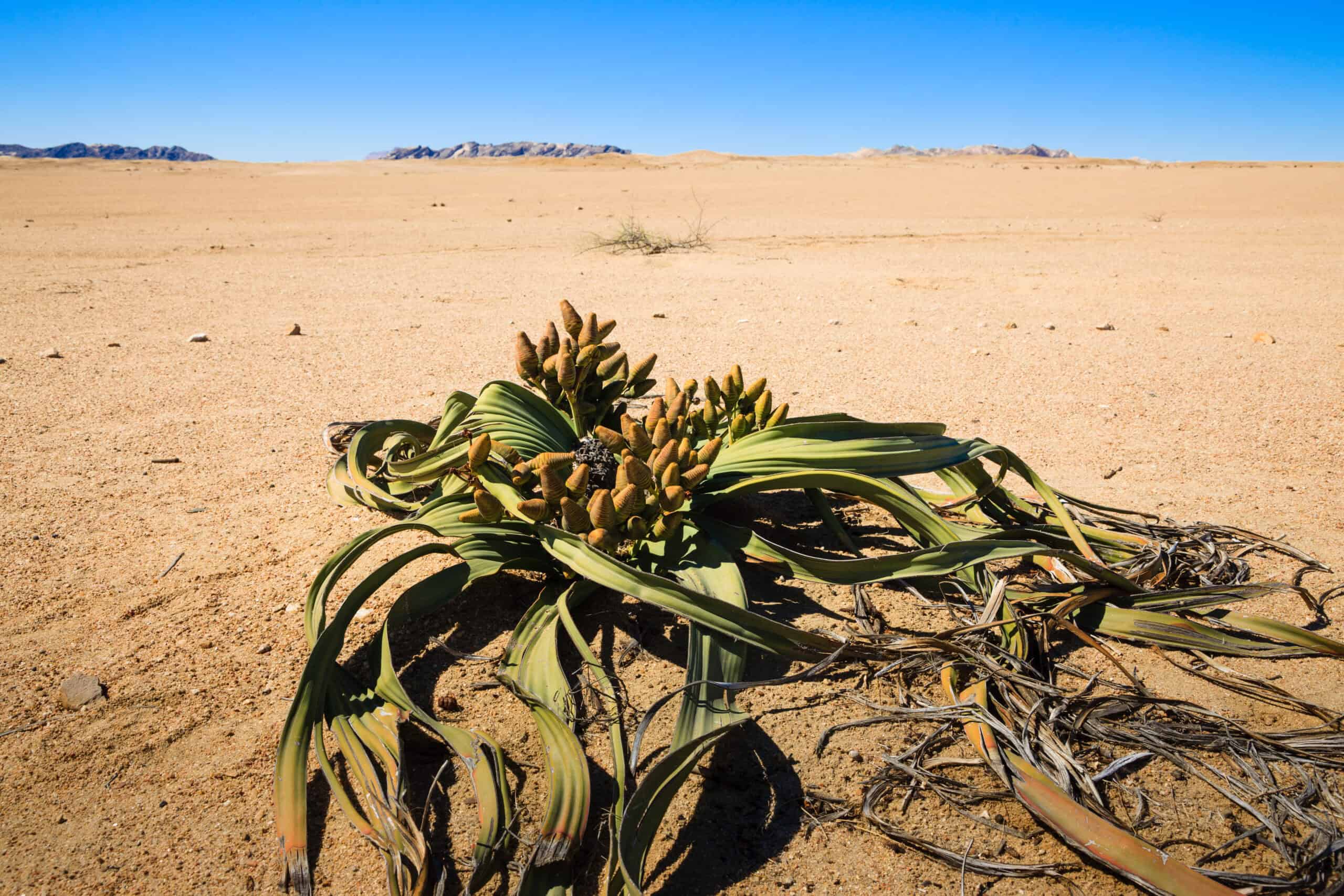
Welwitschia mirabilis, native to the Namib Desert, is a plant of extraordinary endurance and uniqueness. It consists of only two leaves that grow continuously over its lifetime, which can span up to 1,500 years. The plant’s bizarre appearance and resilience in one of the harshest climates on Earth make it a subject of scientific fascination. Its ability to survive with minimal water and extreme temperatures is a testament to the incredible adaptability of plant life in arid environments.
Attenborough’s Pitcher Plant (Nepenthes attenboroughii)
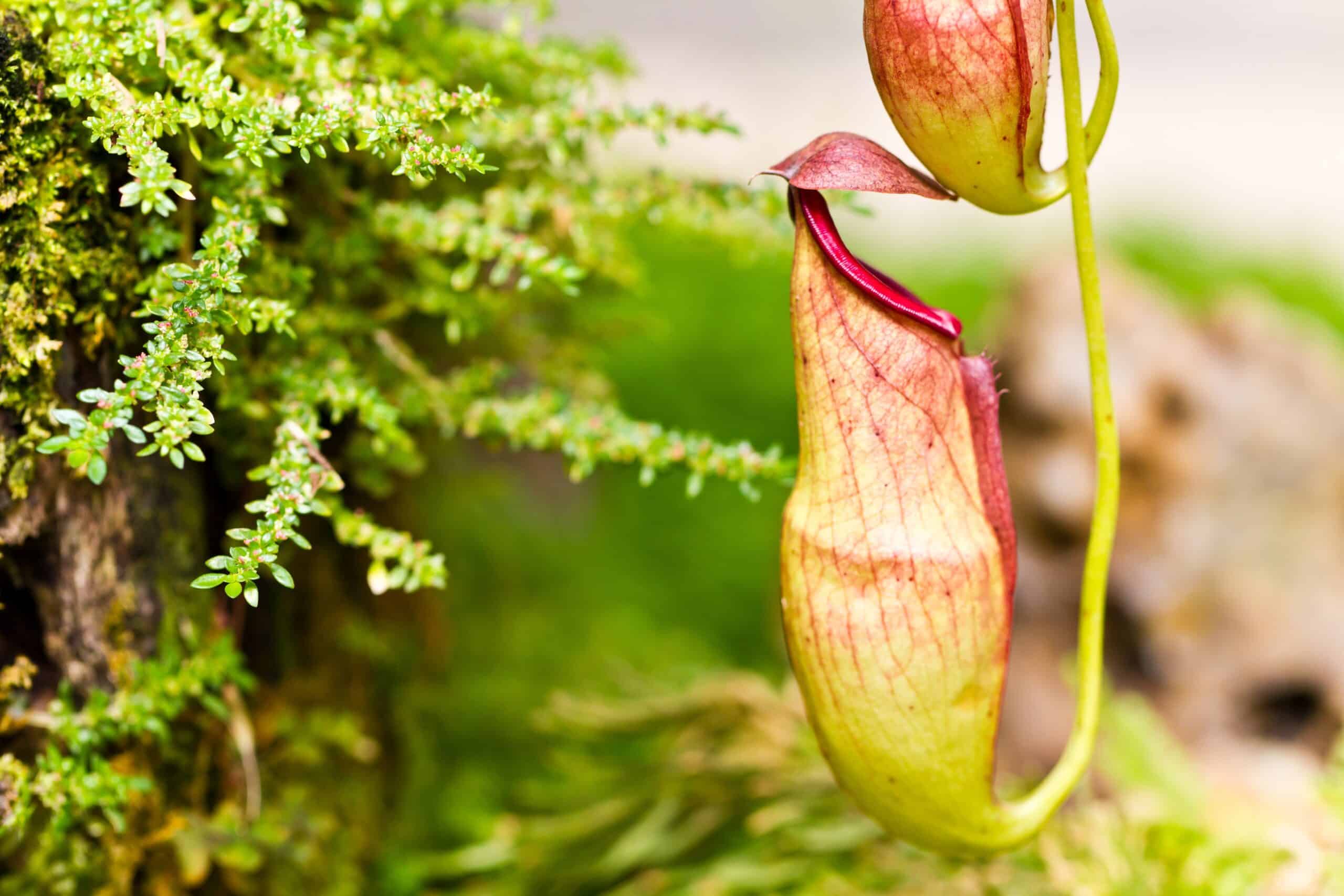
Discovered in 2007 on Mount Victoria in the Philippines, Attenborough’s Pitcher Plant is named after the renowned naturalist Sir David Attenborough. This carnivorous plant features enormous pitchers capable of trapping not only insects but also small rodents. Its discovery was a significant botanical event, highlighting the biodiversity of the Philippines’ mountainous regions. The plant’s rarity and striking appearance make it a valuable subject for conservation efforts.
Encephalartos woodii
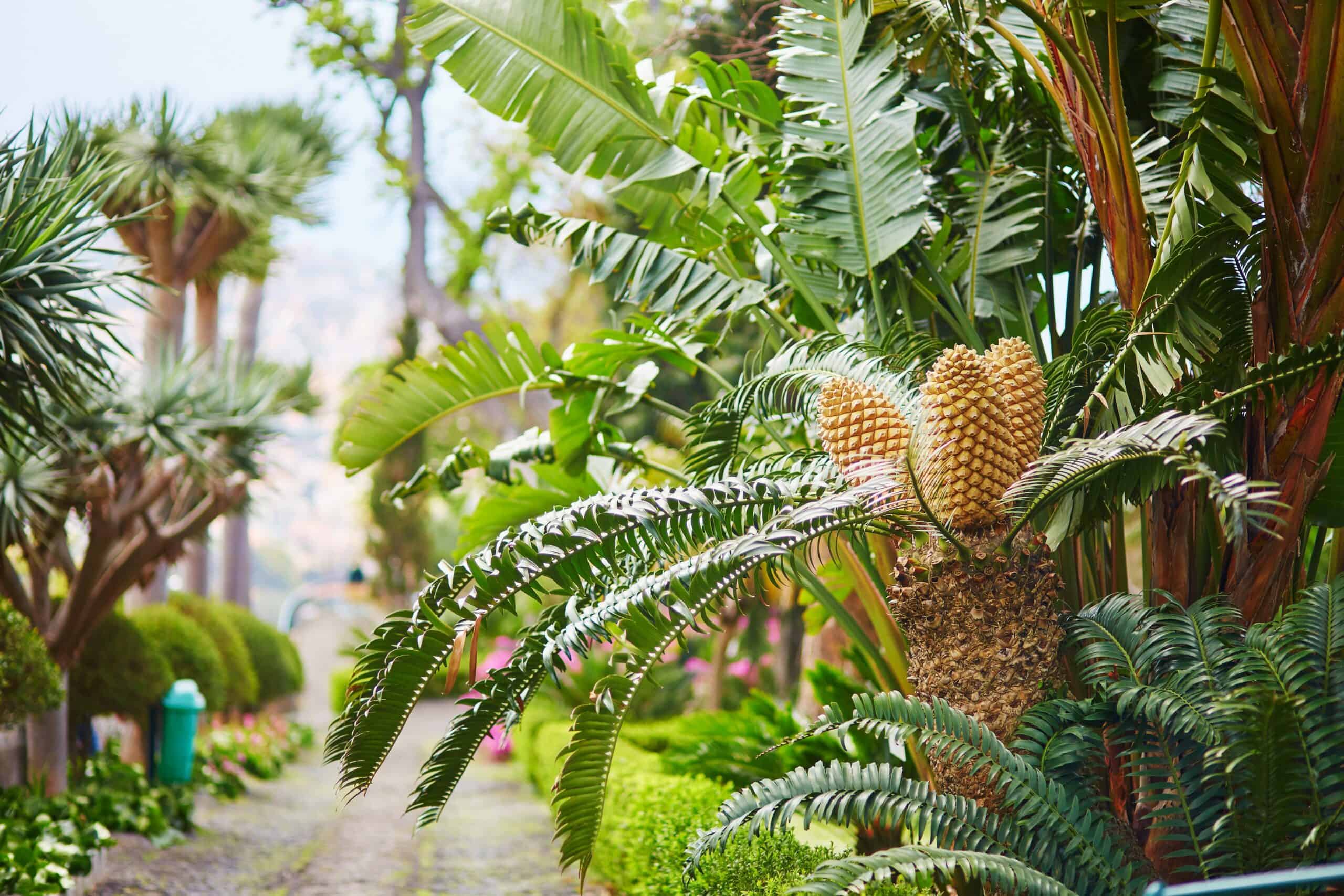
Known as the Wood’s Cycad, Encephalartos woodii is a plant of prehistoric lineage, with only one male specimen discovered in the wild in South Africa. All existing plants are clones of this original specimen, making it functionally extinct in the wild. Its lush, fern-like leaves and ancient heritage add to its mystique. The conservation of Encephalartos woodii emphasizes the importance of preserving genetic diversity and ancient plant species.
Franklin Tree (Franklinia alatamaha)
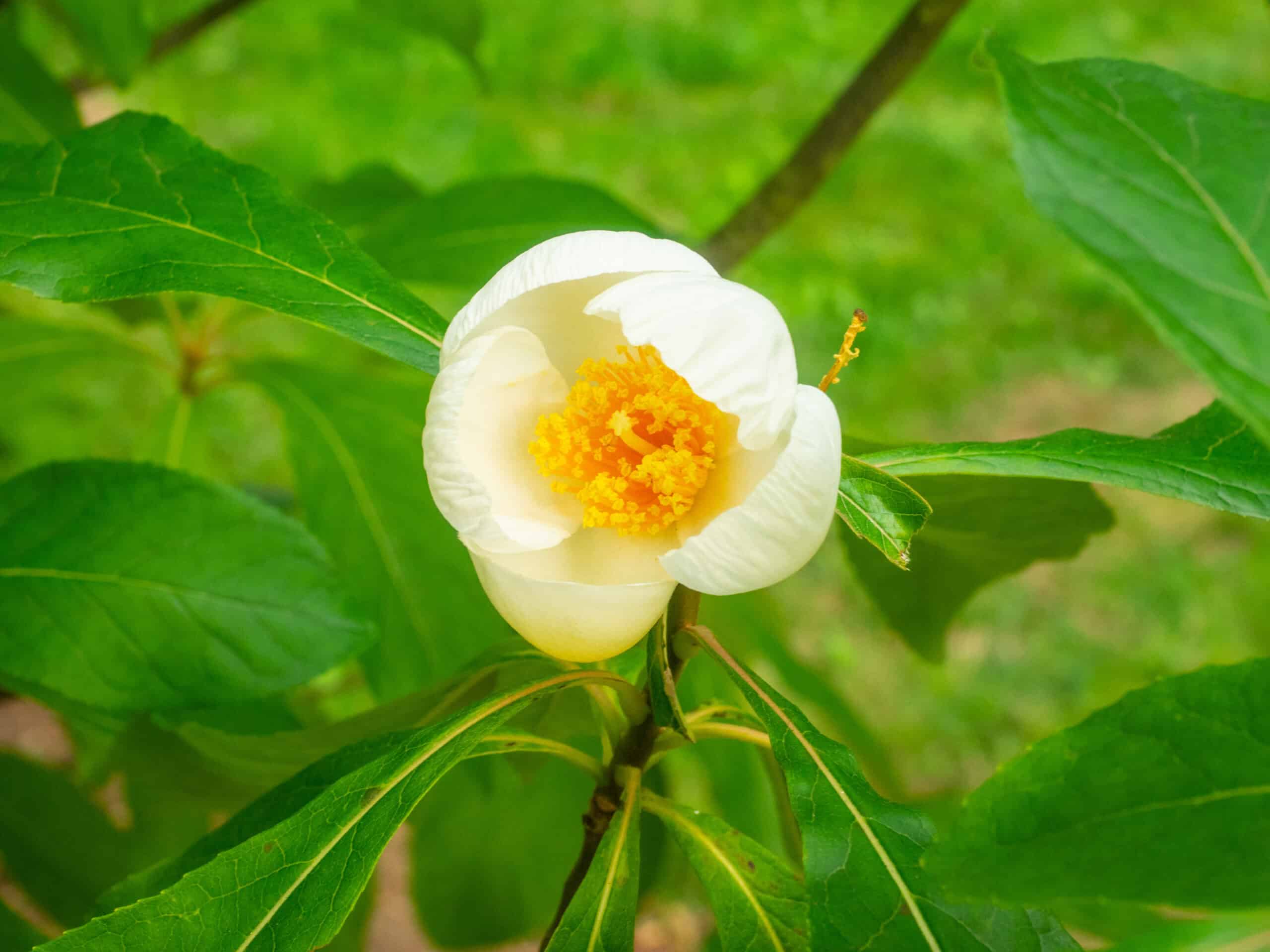
The Franklin Tree, or Franklinia alatamaha, is an extinct wild tree that once grew along the banks of the Altamaha River in Georgia, USA. Last seen in the wild in the early 1800s, it survives only in cultivation. Named in honor of Benjamin Franklin, this tree produces fragrant white flowers and vibrant fall foliage. Its mysterious disappearance from the wild and subsequent preservation in gardens highlight the delicate balance of native plant conservation.
Jade Vine (Strongylodon macrobotrys)
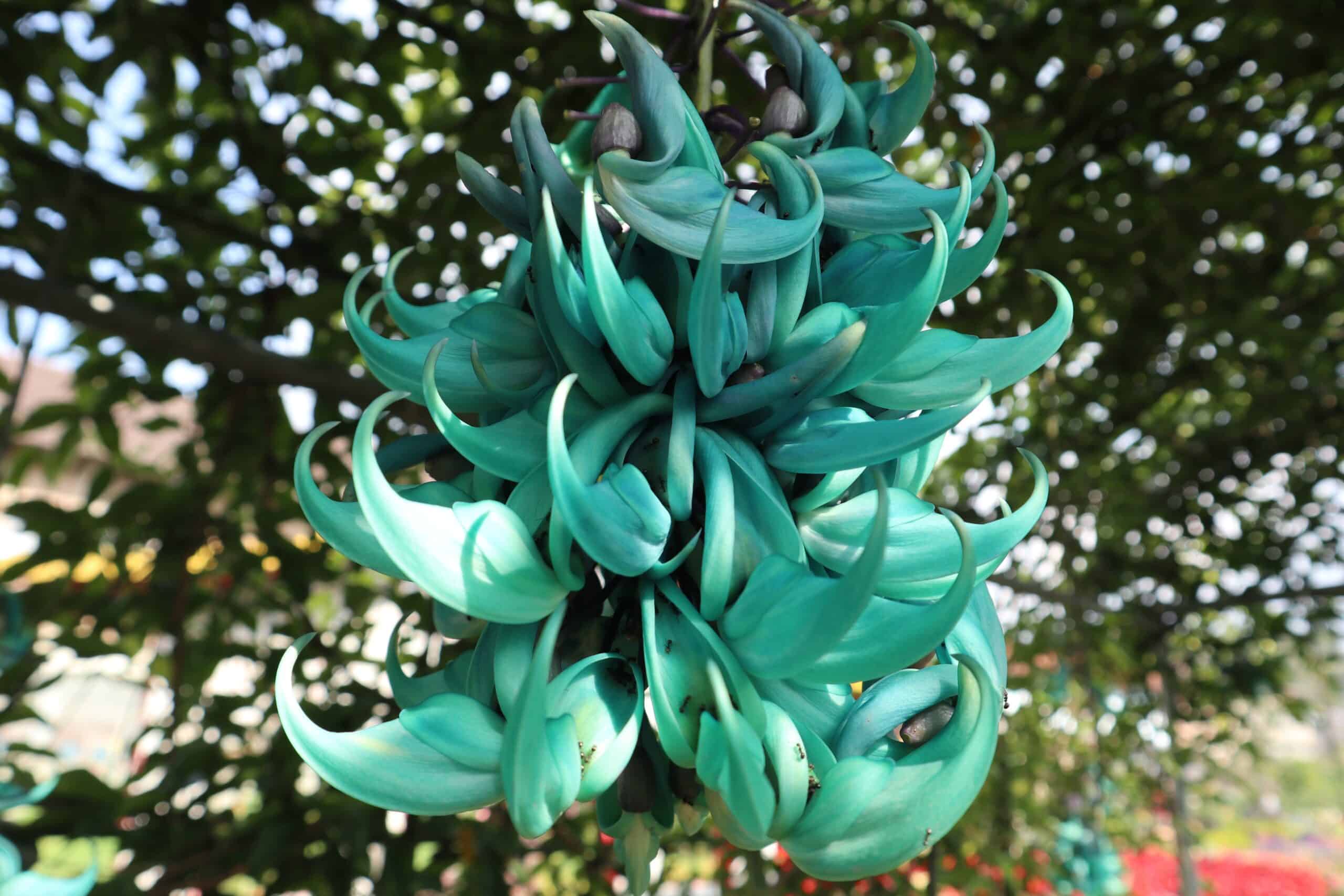
The Jade Vine, native to the tropical forests of the Philippines, is known for its stunning turquoise flowers that hang in cascading clusters. This rare and visually striking plant relies on bats for pollination. Its vibrant, claw-shaped blooms are a marvel of nature, often described as one of the most beautiful flowers in the world. The Jade Vine’s rarity and exotic appearance make it a coveted plant for botanical gardens and collectors.
Chocolate Cosmos (Cosmos atrosanguineus)
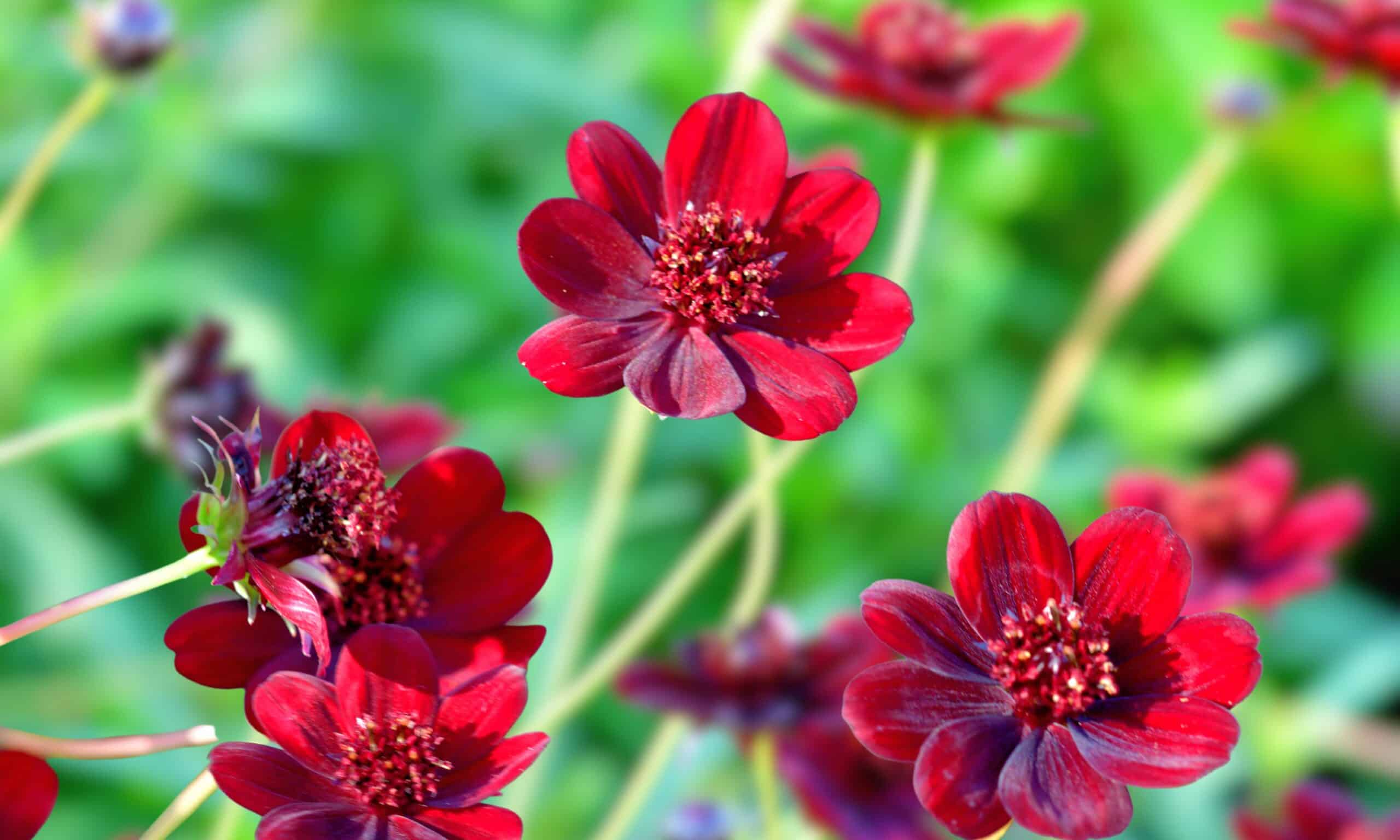
The Chocolate Cosmos, native to Mexico, is renowned for its deep maroon, almost black flowers that emit a rich chocolate scent. Sadly, it is extinct in the wild, surviving only through vegetative propagation. Its unique fragrance and color make it a popular ornamental plant. The story of the Chocolate Cosmos underscores the importance of conserving plant species with limited natural habitats.
Youtan Poluo
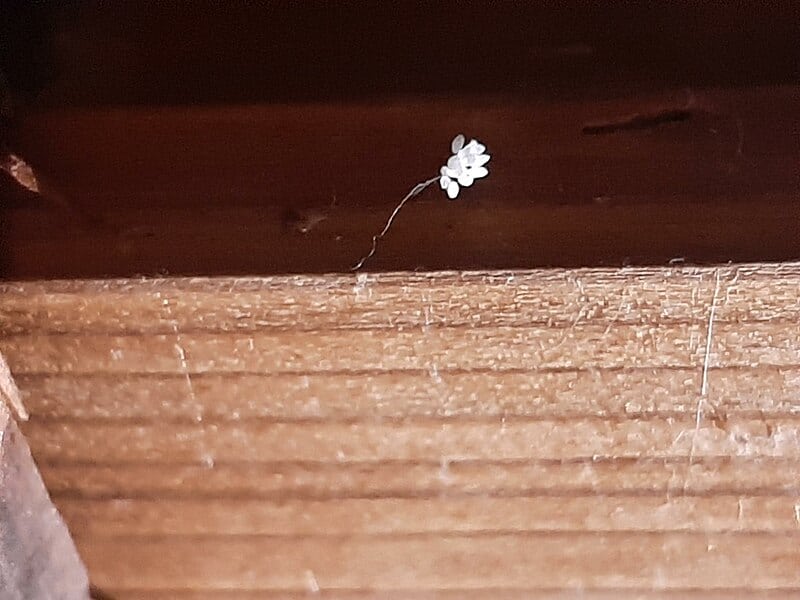
Youtan Poluo, also known as the Udumbara flower, is a rare and mysterious plant mentioned in Buddhist scriptures. It is believed to bloom once every 3,000 years, signifying significant spiritual events. The plant produces tiny, white, fragrant flowers that seem almost ethereal. Its sporadic and rare appearances have fascinated and puzzled botanists and spiritual followers alike, adding an element of myth and legend to its existence.
Cape Sundew (Drosera capensis)
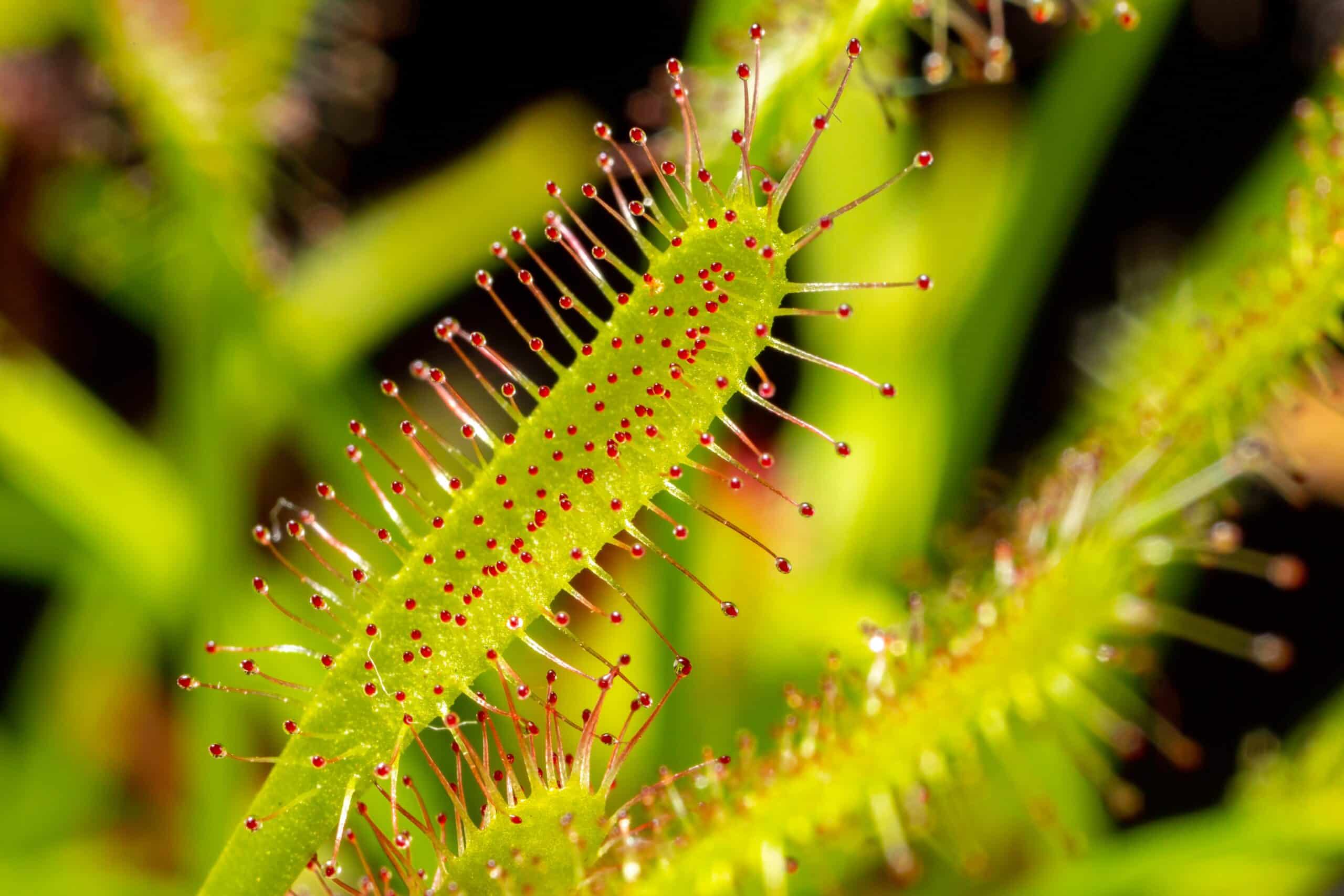
The Cape Sundew, found in South Africa, is a carnivorous plant that captures insects with its sticky, glandular leaves. This plant’s beauty lies in its glistening, dew-covered leaves that lure prey. While not as rare as some other plants on this list, its unique adaptation and stunning appearance make it a noteworthy mention. The Cape Sundew’s survival strategy and delicate appearance highlight the diversity of carnivorous plants.
Shoebutton Ardisia (Ardisia elliptica)
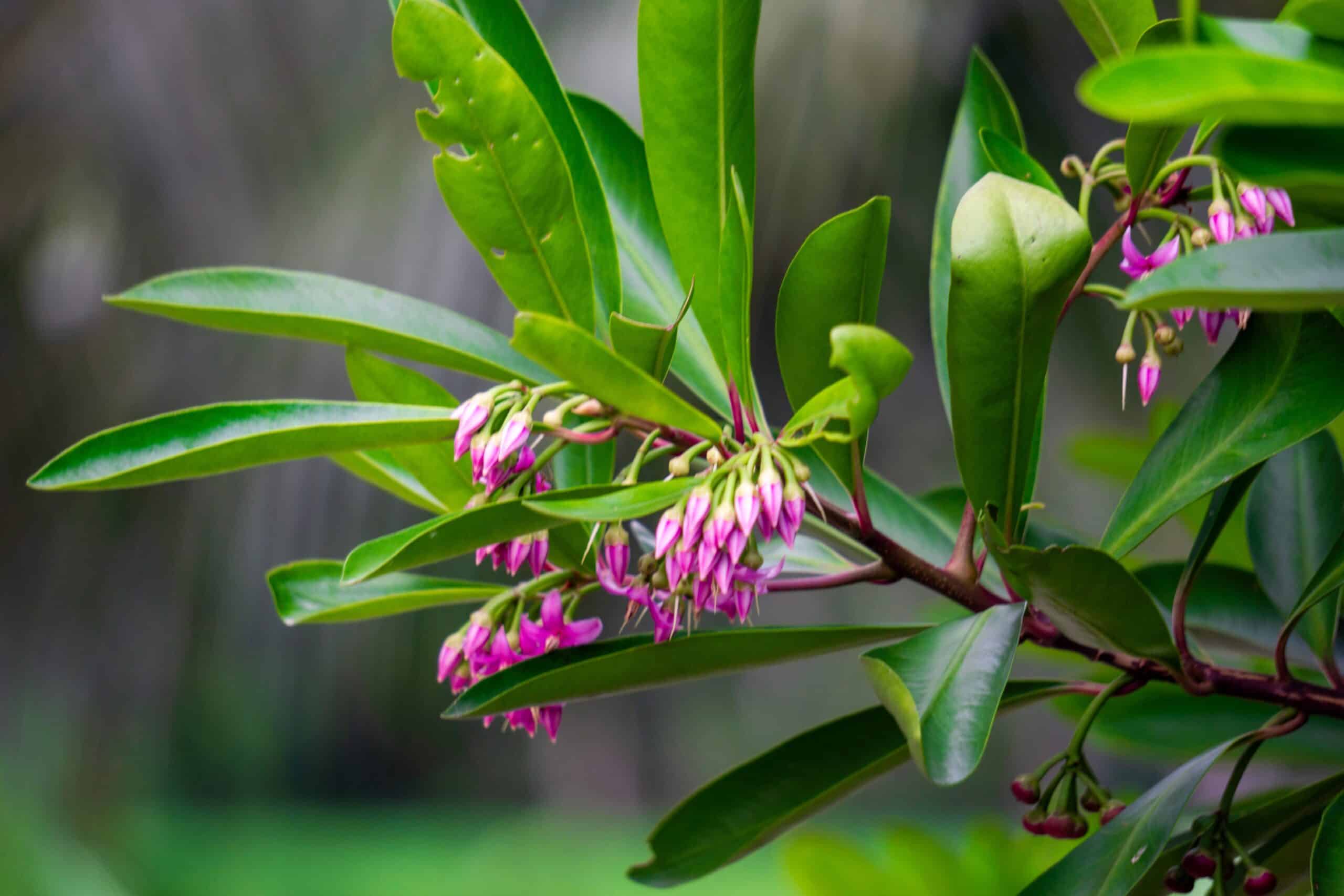
The Shoebutton Ardisia, native to Southeast Asia, is a rare plant known for its ornamental value. It produces clusters of small, star-shaped flowers and dark purple berries. While it has become invasive in some parts of the world, in its native habitat, it is considered uncommon. The plant’s aesthetic appeal and ecological impact make it a subject of both horticultural interest and environmental concern.
This article originally appeared on Rarest.org.
More From Rarest.Org
The evolution of video game consoles has been a fascinating journey, marked by innovation, competition, and a relentless drive to enhance the gaming experience. Read more.
Television has gifted us countless iconic moments, often defined by the memorable props that become synonymous with the shows themselves. These items, ranging from vehicles and furniture to costumes and unique artifacts, hold a special place in the hearts of fans. Read more.
For wine enthusiasts and collectors alike, vintage wines represent the pinnacle of winemaking excellence. These exceptional bottles not only offer unparalleled flavors and aromas but also carry historical significance and rarity that elevate their value. Read more.



